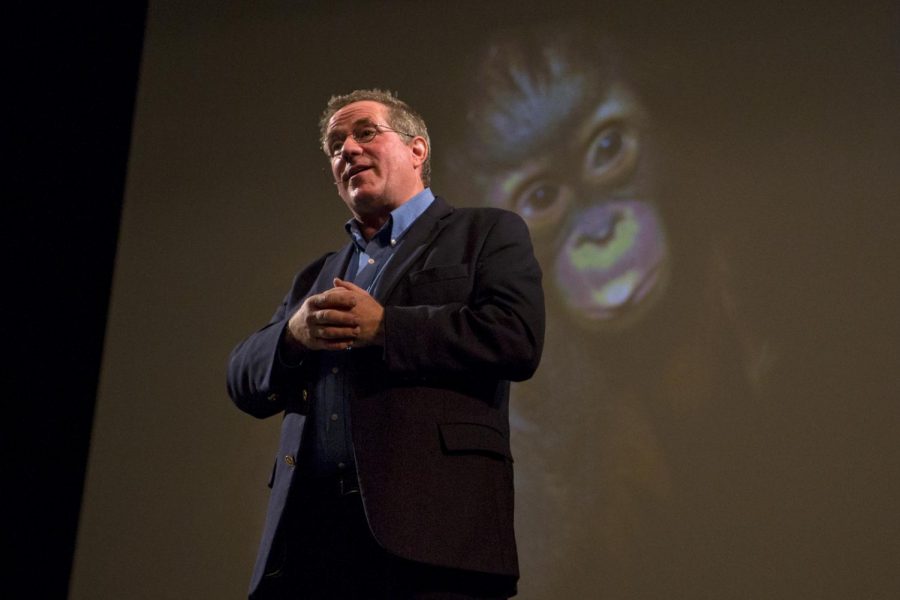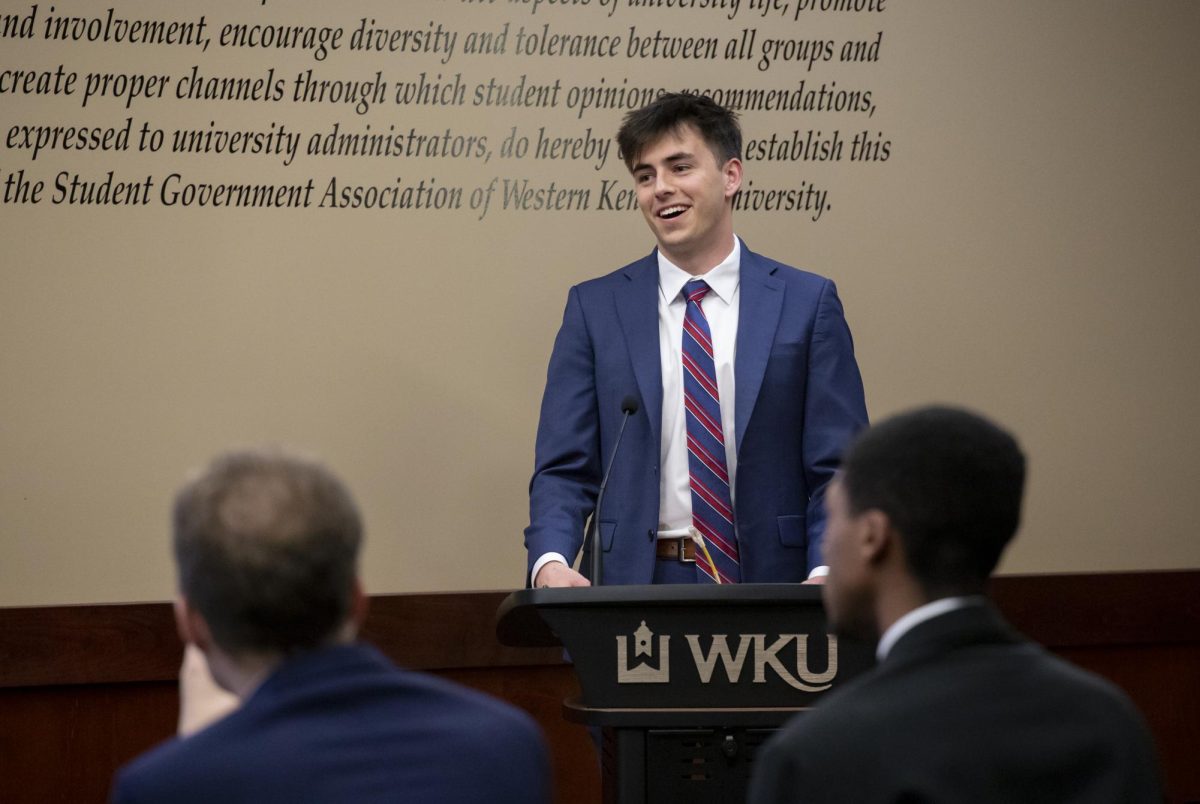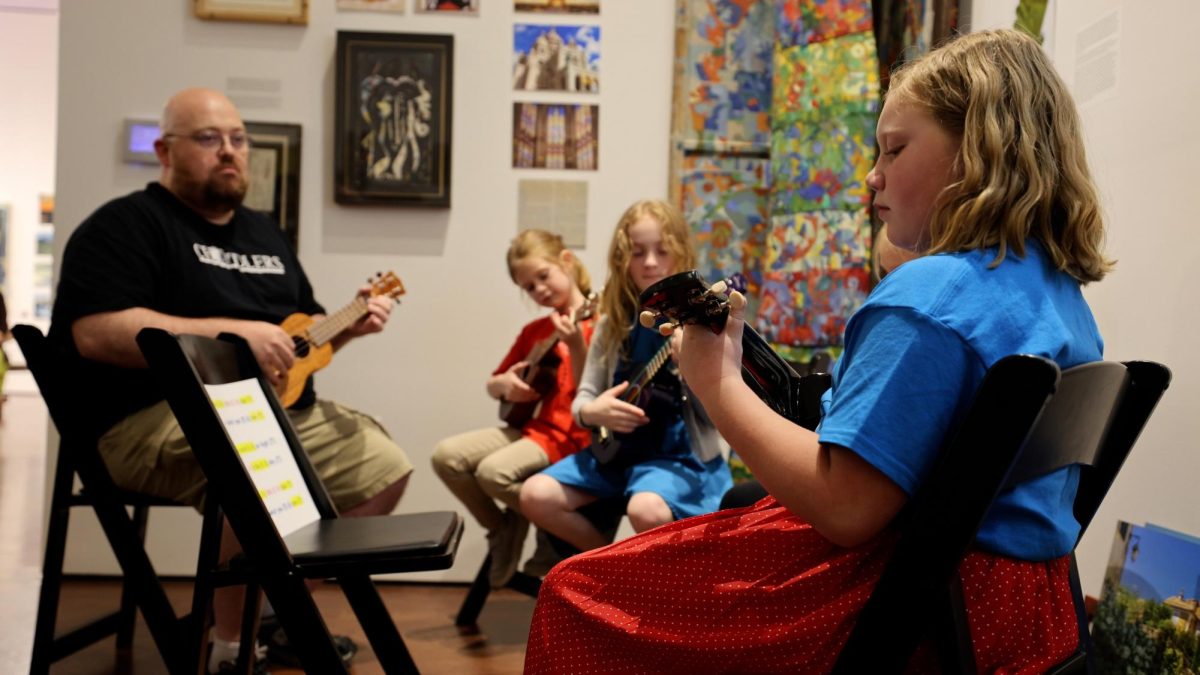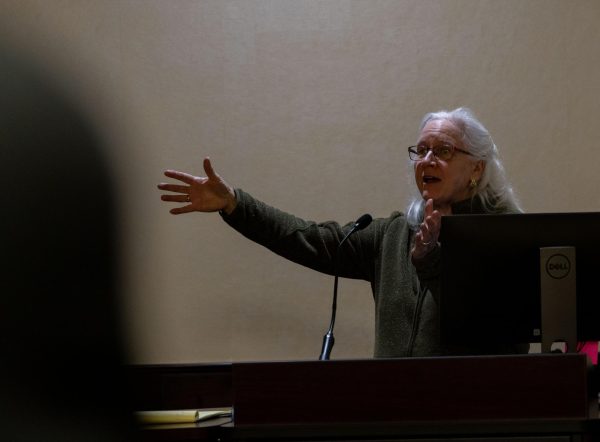National Geographic photographer speaks in Bowling Green
November 10, 2016
Students packed Van Meter Auditorium Monday evening for the third and final Cultural Enhancement Series event hosted this semester, welcoming National Geographic photographer and conservationist Joel Sartore.
Sartore has worked for National Geographic for more than 26 years and has taken photos of more than 6,000 species. His goal is to take pictures of every living species. He said he takes about 30,000 to 40,000 pictures of every eight-week assignment, and only about one out of every 1,000 gets published.
“The fear of not working for National Geographic will give you the motivation to sit 20 feet from a bear,” Sartore said during his presentation.
Sartore credits his passion for wildlife to his parents. He said going out with his mother and father made him really appreciate nature and everything that lives in it.
Many WKU students may be familiar with Sartore’s photos, as some of his amphibian projects are displayed in Mass Media Hall on the first floor.
“I was inspired to do it because I see that amphibians are in real trouble,” Sartore said. “People don’t even know that they exist, much less that they are in trouble, and in danger of extinction. So I figured we could put them on blank background and make people look in their eyes and maybe they’ll care.”
This is the theme of Sartore’s Photo Ark projects. He believes putting a picture of the animal on a blank white or black background and having them look at the camera will create of more personal effect to the people, causing them to want to help out with animals becoming extinct.
“Fifty percent of what I’ve shown tonight could be gone by 2100,” Sartore said. “But most could be saved if people helped. I think people would help if they knew about the problem, so it’s about education for me. How do we get it across to the public and make them care that these animals becoming extinct could one day become us?”
“I think after this I’m going to have a greater awareness of what’s going on with the extinction crisis,” 39-year-old Bowling Green resident April Eastman said. “You read about it in the papers, but when you get an up-close experience with someone who’s seen it, it really makes you think.”
Sartore also spoke about what the average person could do to help the extinction problem. He believes consumerism plays a larger role than most people think. He said it could be as simple as driving a car with less gas mileage, using energy efficient lightbulbs, or even changing a diet consisting of red meats to more home grown vegetables and fish.
“One thing I took away from this cultural event is that everyone has a part to play in conserving the environment, the parks, and the nature around us,” Akron, Ohio, sophomore Francis Wilson said. “Sometimes it’s pretty simple to do so.”
When wrapping his presentation, Sartore commented on what types of policies could be implemented by countries to help; he believes countries should set aside big wilderness areas to preserve animals. He also gave advice for what he believes people could decide to do with their lives to address the concern.
“Never doubt that a small group can change the world. It’s impossible to change the entire world, but worry about the world; do something that matters to you,” Sartore advised.
“What I found most informative and inspiring was his message about finding one specific thing and making that your passion and trying to make a difference through that, rather than trying to change the whole world,” Des Moines, Iowa junior Lily Nellans said.
Some upcoming projects Sartore plans on working on are rare birds in Verona, Italy, rare stream fish in California, and a rodent called the Amargosa Vole.
Sartore concluded by addressing his concerns for the future. He is concerned people are becoming too focused on what’s going on in the celebrity world and less nature oriented.
“If we can’t figure out how to get the next generation involved in nature again, it’s game over,” Sartore said.
Reporter Miles Schroader can be reached at 270-745-2655 and [email protected].














![Students cheer for Senator at Large Jaden Marshall after being announced as the Intercultural Student Engagement Center Senator for the 24th Senate on Wednesday, April 17 in the Senate Chamber in DSU. Ive done everything in my power, Ive said it 100 times, to be for the students, Marshall said. So, not only to win, but to hear that reaction for me by the other students is just something that shows people actually care about me [and] really support me.](https://wkuherald.com/wp-content/uploads/2024/04/jadenmarshall-1200x844.jpg)











